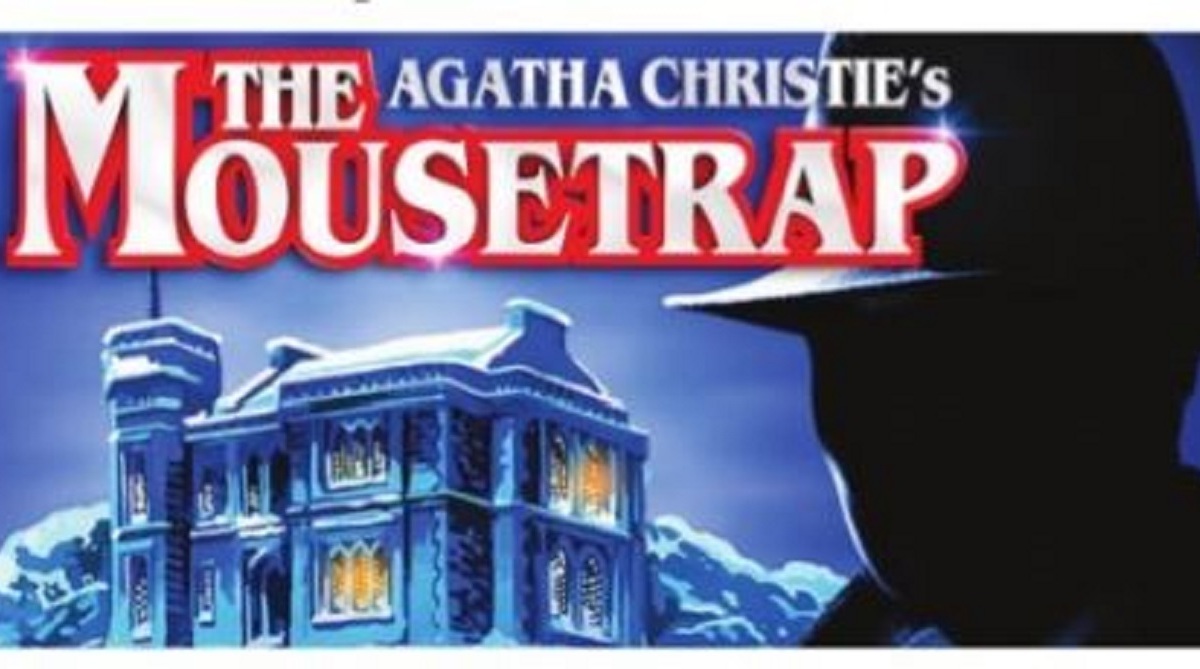As the New Year unfolds, it must momentarily pause on 12 January which marks Agatha Christie’s 42nd death anniversary. Her writing holds the reader’s attention literally to the last words, like her narrative, “And Then There Were None”, which became the bestselling book of all time, with over 100 million copies sold.
An incredible two billion copies of her books have been sold, which has only been surpassed by the Bible and the works of William Shakespeare. In an example of her writing, is a scene in the living room of a guest house, which was blocked by snow, with the radio on, the telephone wire severed and murder in the offing, all combined to be a perfect portrayal of pathos, that only Christie could achieve.
This scene from Christie’s narrative has entered into the realms of history because the work is not a novel, but a play-The Mousetrap, which is in its 65th year of running, and during this period of time, has staged over 27,000 performances. The first scene opens with darkness, and the sounds of someone whistling the tune, Three Blind Mice. Shouts are heard in the dark, indicating something wrong and then police whistles are audible.
The lights come on and the audience hears a radio announcer reporting a recent murder. The scene has now switched to Monkswell Manor, a recently converted guesthouse, by a young couple, Mollie and Giles Ralston. The first scene we have just read about, depicted only by sound, begins with the murder of Maureen Lyon. Mollie waiting for the arrival of guests to Monkswell Manor, listens to the radio announcing the Lyon murder, shortly after the curtains go up. The guests arrive. Christopher Wren, a chirpy young man, is followed by Mrs Boyle and Major Metcalf who arrive together in a taxi, from the station. Mrs Boyle complains about everything while Metcalf is an amiable former military man. Miss Casewell, a young masculine featured woman is the last of the booked guests.
An unexpected fifth party arrives, with a foreign accent, identifying himself as Mr Paravicini. He reports that the approach to the guesthouse is completely blocked, by snow, and for all practical purposes they are trapped, in Monkswell Manor. The following afternoon in this uneasy predicament, Mollie answers the phone to be told by Superintendent Hogben, of the Berkshire police, that he is dispatching Sergeant Trotter to the guesthouse and they all must listen carefully to what he has to tell them. The Ralstons are surprised: What have they done to attract the attention of the police? Trotter arrives with a pair of skis. Metcalf has observed that the phone is out of order and the wire seems to have been deliberately cut. Trotter explains he has been sent to investigate the murder of Maureen Lyon.
Apparently, Maureen and her husband ill-treated their foster children, which resulted in the death of the youngest child and the parents were imprisoned for their actions. The mystery deepens further as Trotter reveals a notebook found at the scene of the murder, which contained the address of Monkswell Manor, and the words, ‘Three Blind Mice.’ A note pinned onto the woman’s body had the words, ‘This is the first.’ The police sent Trotter to investigate how the Ralston’s guesthouse is linked to this murder and whether the guests in Monkswell Manor are in any danger.
Giles and Molly deny any connection with the crime, but Molly is uneasy answering Trotter’s questions. All guests similarly deny any links to the incident. Metcalf confronts Mrs Boyle with information of her being the Magistrate who assigned the children to their foster parents. Mrs Boyle admits this but denies any responsibility for what subsequently occurred. Mrs Boyle enters into the now empty room and listens to the radio. The tune of Three Blind Mice is heard, whistled by an unknown person. Suddenly the lights go off, a scuffle is heard and moments later Metcalf walks in, turns on the light, to find Mrs Boyle strangled and dead on the floor. Mollie affirms that the radio was very loud. Mollie was a teacher of the doomed children.
Georgie, the eldest, is Trotter, who wished to take revenge on Mollie and Mrs Boyle. The children had appealed to Mollie to rescue them. Mollie tells Trotter she was in poor health then. Casewell is the sister of the children, who arrived at the guesthouse to take Trotter (Georgie) to safety. Metcalf was a policeman, not Trotter, who switched places with Metcalf after discovering the Three Blind Mice notebook on Maureen Lyon. It is Trotter, Georgie, who is the murderer. The loose ends are finalised by the police.
The play was named The Mousetrap, since each person was investigated, from their individual places, in the guesthouse, when Mrs Boyle was strangled. The word, Mousetrap, is used in Hamlet, where a play is performed to gauge the conscience of the king. “You must think of everything,” writes Christie, on the art of demystifying a murder mystery.











